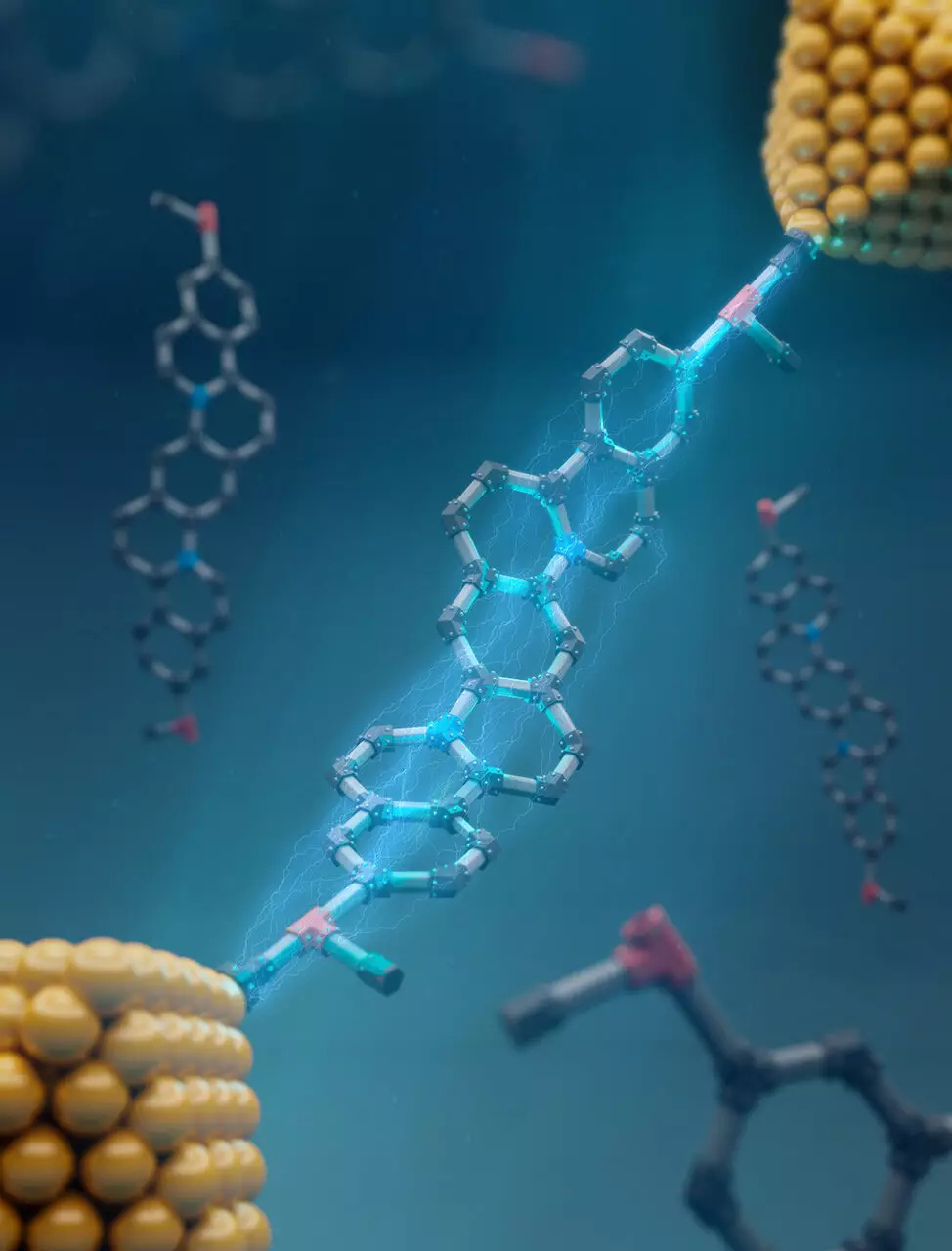Molecular electronics represents a frontier in the quest for miniaturized and efficient electronic devices. As conventional silicon-based microchips face fundamental physical limitations in their size, researchers are exploring alternative paths to circumvent these challenges. The emergence of molecular electronics, which employs individual molecules as the essential components for electronic functions, offers a promising solution. However, the dynamic characteristics of these molecular structures can immensely influence device performance, necessitating innovative approaches to ensure consistent conductivity.
Delivering on Moore’s Law has become increasingly complex as traditional approaches yield diminishing returns. The relentless pursuit to double transistor density has hit walls due to the restrictions imposed by the physical dimensions of silicon. To forge ahead, scientists are now honing in on molecular-scale components, primarily focusing on the unique conductance properties of individual molecules. A critical barrier in this endeavor has been the inherent flexibility found in many organic molecules, which leads to variations in electrical conductivity—fluctuations that can be radical, with some molecules demonstrating differences of up to 1,000 times in their conductance based on their conformational states.
Understanding the implications of molecular flexibility is essential; it can resonate through different applications of molecular electronics, ranging from sensors to transistors. Researchers, notably from the University of Illinois Urbana-Champaign, have pinpointed a strategy that could significantly stabilize these conductance patterns through the introduction of rigid molecular structures known as ladder-type molecules.
The structural design of ladder-type molecules allows them to maintain a fixed arrangement irrespective of environmental changes. These molecules consist of interconnected chemical rings, which make them resistant to the kinds of bond rotations that would usually result in varying electronic properties. As Professor Charles Schroeder articulates, “To overcome this challenge and achieve constant conductivity regardless of the conformation, our solution was to prepare molecules with rigid backbones.” This intrinsic rigidity provides the foundation for reliable electronic performance while minimizing the potential for unpredictable conductance.
The implications of achieving consistent conductance are monumental. With millions of components necessary to fabricate modern electronic devices, maintaining uniformity in electronic properties could finally pave the way for practical applications of molecular electronics in consumer technology. The ability to produce a reliable structure means that manufacturers could encounter fewer hurdles in scaling to large quantities of identical components.
The backbone of this breakthrough lies in a novel synthesis method, referred to as one-pot ladderization. This streamlined approach contrasts sharply with traditional synthesis techniques which involve costly and complex two-component reactions. The ability to utilize simpler starting materials allows for a broader array of molecular designs, resulting in a diverse range of products tailored for various applications in molecular electronics.
This innovative synthesis strategy does not just stop at ladder-type molecules; its principles have been successfully transplanted to create other functional shapes, like butterfly-shaped molecules—another shape-persistent category. These molecules demonstrate similar backbone rigidity, thereby supporting the overarching goal of consistent electronic performance across diverse molecular architectures.
As the field of molecular electronics burgeons, the challenges encompassing the reproducibility and reliability of electronic properties remain paramount. The groundbreaking work done by Schroeder and his team elevates our understanding of molecular stability in conducting environments. By establishing a reliable framework for synthesizing shape-persistent molecules, this research could catalyze a new era for electronic components where the miniaturization of devices goes hand-in-hand with performance stability.
The commercial viability of molecular electronic devices hinges on the ability to control the electrical properties unambiguously. As researchers further refine synthesis methods and explore new molecular structures, we may be on the cusp of an industrial transformation—where electronic devices are not only smaller and more efficient but also consist of components that work harmoniously to meet increasing technological demands.
While the road to molecular electronics may be fraught with challenges, the potential benefits of utilizing shape-persistent molecules illuminate a path forward that could significantly reshape the landscape of electronic materials. As these innovative strategies continue to evolve, they promise to revolutionize how we think about and use technology, propelling us toward a future where the dreams of compact, sophisticated electronic devices become a tangible reality.


Leave a Reply